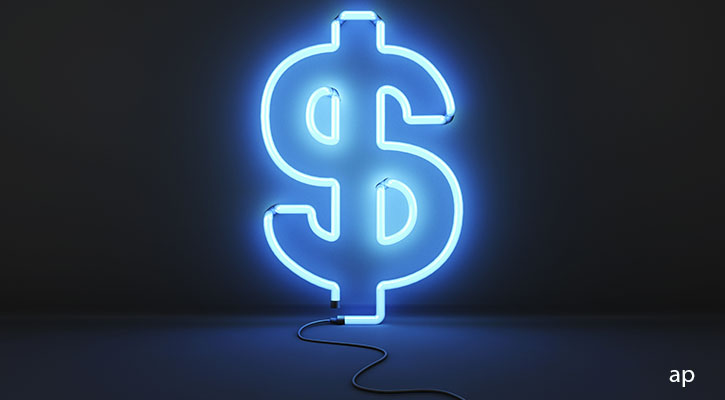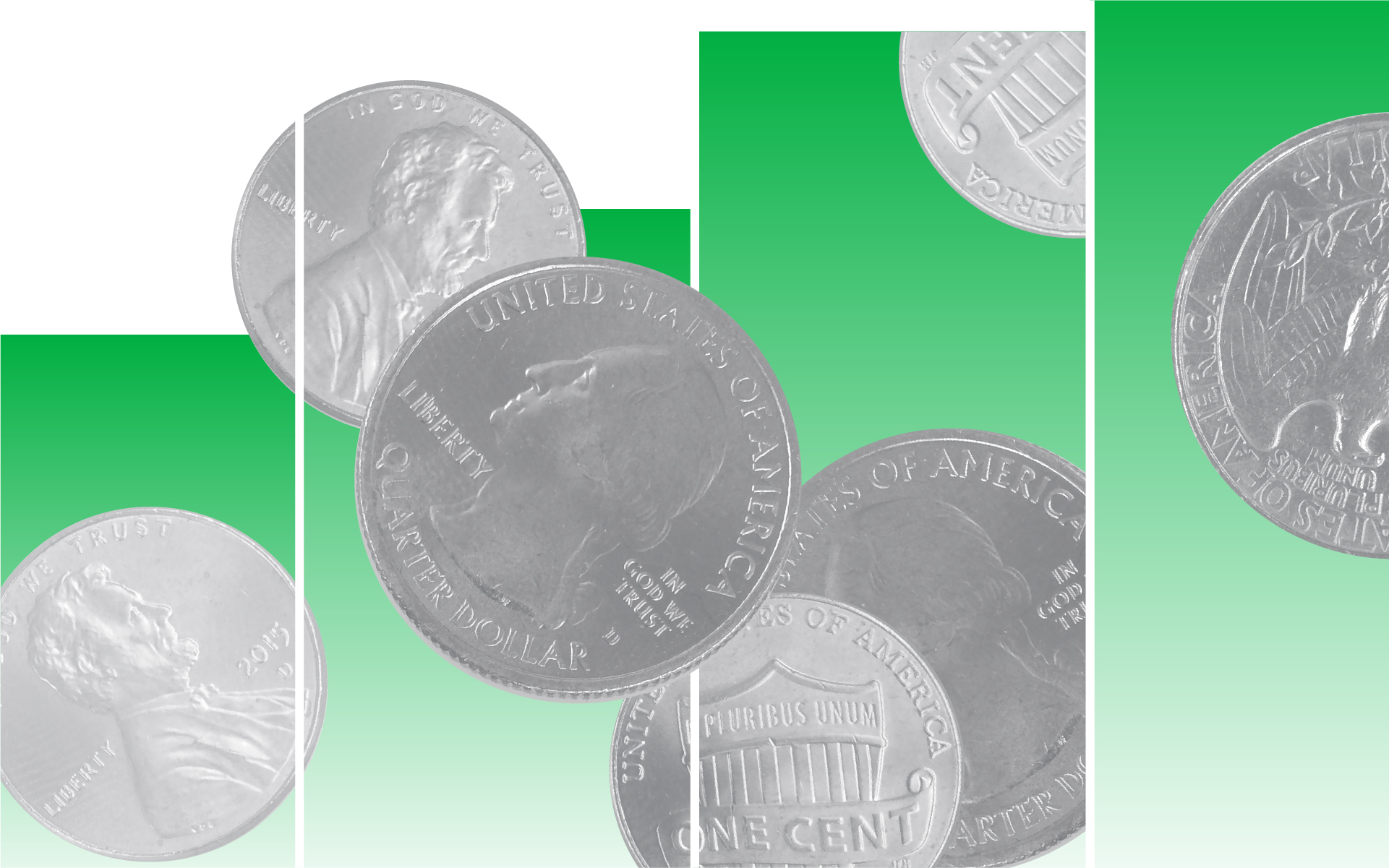In a year full of surprises in the markets, there’s been a new one in recent weeks: a spike in bond yields.
On the surface, it would seem there has been good news for the bond market lately. The July Consumer Price Index report marked a second consecutive month of positive news for inflation. Meanwhile, there have been increasing signs the Federal Reserve either has ended its series of aggressive interest-rate increases or is only planning one more hike. From there the Fed is widely expected to start cutting rates in 2024.
Still, bond yields – which move in the opposite direction of bond prices – turned sharply higher starting midway through July. Most notably, the yield on the US Treasury 10-year note, which serves as an important benchmark for home mortgages, has risen to its highest level since late 2007. The 10-year note is yielding 4.3% as of August 18, up from 3.8% on July 18.
More broadly, the overall bond market has suffered losses. The Morningstar US Core Bond Index is down 2.3% over the past month, leaving the benchmark essentially flat for the year. With its greater sensitivity to interest rates, the Morningstar US 10+ Yr Treasury Bond Index has lost 5.4% in August and is down 4.1% in 2023.
Why the sudden sell-off? Bond watchers point to four key factors pushing prices lower and yields higher:
• Increased US Treasury debt issuance;
• The Bank of Japan losing its grip on low interest rates;
• A hot US economy;
• A higher inflation premium.
#1 Increased US Treasury Debt Issuance
On July 31, the US Treasury surprised the bond market when it announced a significantly larger need to raise money than expected. The US government now anticipates raising a net $1.007 trillion through bond sales in the third quarter – the largest cash raise ever during a third quarter, some 25% more than it estimated it would need just a few months ago.
This announcement was followed days later by rating agency Fitch lowering the US government’s credit rating to AA+ from AAA, citing a deteriorating fiscal outlook. While bond investors largely shrugged off the downgrade, it came as prices were being pushed lower to adjust for higher issuance.
"There’s been noise around the deficit," says John Briggs, global head of economics and markets strategy at NatWest Markets.
"Not the Fitch downgrade specifically, but more the size of the Treasury’s [quarterly bond auctions], funding needs, and deficit forecasts, which has people talking about supply in the long term."
Despite the recent push higher in bond yields, many in the market are still expecting these yields to move lower (and prices higher) heading into 2024.
In the near term, the size of the third-quarter bond sales "was a lot more than what people thought," says Mark Lindbloom, portfolio manager at Western Asset Management.
"Somebody’s going to buy them – it will get done – but the question is at what price."
#2 Bank of Japan Monetary Policy
For decades, one constant of the global economic landscape has been Japan’s extremely low interest rates. As the Bank of Japan (BoJ) has struggled to stimulate the country’s moribund economy, it has kept bond market yields locked at close to zero. One side effect of this policy has been that Japanese investors have turned to foreign bond markets in search of yields, mostly in the United States and Europe.
However, just two days before the Treasury announcement, the Bank of Japan surprised investors by raising its cap on bond yields to 1% from 0.5%.
While monetary policy changes in Japan "move glacially," according to Lindbloom, the speculation in the markets is about whether the BoJ will continue to notch the cap higher, making that market more appealing to Japanese investors.
He says the concern is that if "Japanese investors have their own bonds they can buy, they’re going to repatriate [capital], won’t buy as many US Treasuries, and … that’s going to push long-term rates up around the world."
#3 A Robust US Economy
Just about the biggest unexpected development this year has been the continued strength of the US economy. Defying widespread expectations for a recession, consumer spending remains solid, and while job growth has been moderating, hiring continues at a historically strong pace. This resiliency has come despite the regional banking crisis in March, which had many worried about a credit crunch that could lead to bank lending stalling out, taking the economy into a downturn.
Now the bond market is looking beyond the more recent good news on inflation, and investors are beginning to question just how much further inflation can decline if the economy doesn’t start to cool down.
"Markets are trying to understand how low inflation can get if you have a 3.5% unemployment rate, a resilient economy, and interest-rate-sensitive sectors—including housing and autos, which did slow last year but now have started to perform pretty well again despite the rates," says Pimco portfolio manager Mike Cudzil.
With "this kind of growth that has yet to respond meaningfully to these higher levels of rates, the question is what that means for either level of inflation going forward […] or maybe [market] rates need to be a bit higher."
#4 A Higher Inflation Premium
Against this backdrop, bond investors are looking for a little more cushion in long-term yields against the possibility that inflation may remain elevated, Cudzil says.
While it may seem counterintuitive at first, expectations that the end to the Fed’s rate hikes is either already here or within sight could also be contributing to bond yields rising. Briggs points to a recent push high in bond market indicators for inflation expectations as potential evidence.
For example, the so-called 5-Year, 5-Year forward inflation expectation rate – a measure of where bond yields suggest inflation is expected to be in five years – hit 2.53% in early August. This was its highest level since April 2022, when the inflation surge was beginning to take hold. Prior to this recent spike, the five-year, five-year rate had hovered between 2.1% and 2.3% since late 2022.
"There has been a rise in inflation expectations in the market, and that corresponds to a Fed that is no longer actively fighting inflation but letting higher but stable rates do the work," says Briggs.
"Inflation is coming down but is still above target, so it’s reasonable for investors to require a bit more risk premium in inflation."
Despite the recent jump in bond yields, many expect that by 2024, yields will be heading lower. Cudzil believes the jump in bond yields will prove limited: "our base case is a slowing of growth and inflation, which leads to [Fed rate] cuts and lower yields."
 Strong Pick-up in Fixed Income Boosts 60-40 Portfolio Returns
Strong Pick-up in Fixed Income Boosts 60-40 Portfolio Returns
 Why Your Portfolio Might Need Stocks With High Cash Flows
Why Your Portfolio Might Need Stocks With High Cash Flows
 Upcoming changes to our membership offerings, tools, and features
Upcoming changes to our membership offerings, tools, and features
 Highlights from the 2025 Morningstar Fund Awards (Singapore)
Highlights from the 2025 Morningstar Fund Awards (Singapore)
.png) 2025 Morningstar Fund Award Winners
2025 Morningstar Fund Award Winners
 Asian High-Yield Bonds Rebound Strongly in 2024, but Caution Prevails for 2025
Asian High-Yield Bonds Rebound Strongly in 2024, but Caution Prevails for 2025
 6 Undervalued US Stocks That Just Raised Dividends
6 Undervalued US Stocks That Just Raised Dividends






.jpg)









